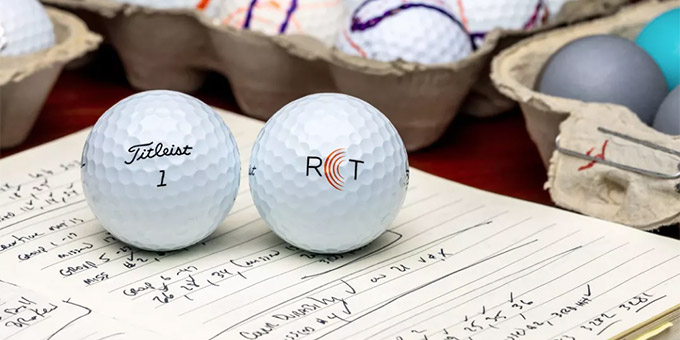Posted on March 15, 2023 in News.
The R&A proposes a new rule for balls
The R&A and USGA have proposed a Model Local Rule (MLR) that gives competition organizers the ability to require the use of golf balls tested under modified launch conditions to account for the impact of distance hitting in golf.
The Rules of Golf may soon change if the new Model Local Rule (MLR) proposals are adopted. The proposal would only concern elite competitions and would not impact recreational golf.
MLR-compliant golf balls should not exceed the current Overall Distance Standard (ODS) limit of 317 yards under modified launch conditions with a clubhead speed of 127 mph
All other balls would be tested using the current values
The Overall Distance Standard was established in 1976 to reflect the maximum potential hitting distance of the longest hitters currently playing the game.
The modification to the test device is expected to reduce swing distance by an average of 14 to 15 yards for the longest hitters with the highest clubhead speeds.
Martin Slumbers, Managing Director of R&A, said: We have worked closely with the golf industry throughout this process and have taken the time to listen carefully to their views and consider the helpful and constructive feedback they have provided to us. At the heart of our proposition is the desire to minimize the impact on thriving recreational play. We believe the proposed Model Local Rule will help us move forward by protecting the inherent qualities of the sport and reducing the pressure to lengthen courses. This is an important issue for golf that must be addressed if the sport is to retain its unique appeal and challenges. »
“Elite-level batting distances have steadily increased over the past 20, 40 and 60 years. It's been two decades since we last reviewed our testing standards for ball distances. Predictable and continuous increases will become a significant problem for the next generation if not addressed quickly. The MLR we offer is simple to implement, future-proof, and non-impacting on recreational gaming,” said USGA CEO Mike Whan. "We are taking the next steps in this process, guided first and foremost by what is good for the game as a whole."
The R&A and USGA have today announced a proposal to introduce a Model Local Rule option for golf balls used in elite competitions.
More information here 👉 https://t.co/jKes6tE8up pic.twitter.com/JG9Sia1qZ2
— The R&A (@RandA) March 14, 2023
The R&A and the USGA have decided to tackle the long-term trend of increased hitting distances and longer courses which they believe threatens the long-term viability of golf and undermines the principle fundamental that a broad and balanced set of playing skills should remain the primary determinant of success in golf.
Well aware that they are not making everyone happy, the British R&A and the USGA said they made this difficult decision to defend the integrity of sport yesterday during a virtual press briefing. They want to focus on skills rather than distance, which was becoming an issue.
The R&A report also found that the general trend towards longer golf courses is having negative consequences, including increasing the cost and time of play, limiting progress on sustainability efforts and reducing course challenge. – in some cases, by creating a risk of obsolescence.
Data provided for the report shows the average clubhead speed on the PGA TOUR was 114,6 mph last year. The fastest percent of clubhead speeds averaged 127,5 mph in 2022, while the average of the fastest five percent of clubhead speeds was 124,2 mph.
To resist technological breakthroughs and power, there has been a tendency to lengthen the courses for the past ten years.
As proof, the prestigious Augusta National golf club has added hundreds of yards in recent years to defend itself against modern equipment.
“Change the damn golf balls,” had let go Jack Nicklaus at a press briefing, in Augusta, in 2016. “They go so far. This field is probably the only one in the world that can financially afford changes to compete with the technology.”
Since the start of this campaign, Rory McIlroy leads the pack with slaps of 326,6 yards, on average. The new measure would bring back bullet technology from the 1990s.
If adopted, the proposal will enter into force in January 2026.
For more information click here
Scottie Scheffler's coronation at the RBC Heritage
Chiara Tamburlini wins the Joburg Ladies Open
Boutier and Delacour in the trap, two leaders at the Chevron Championship









